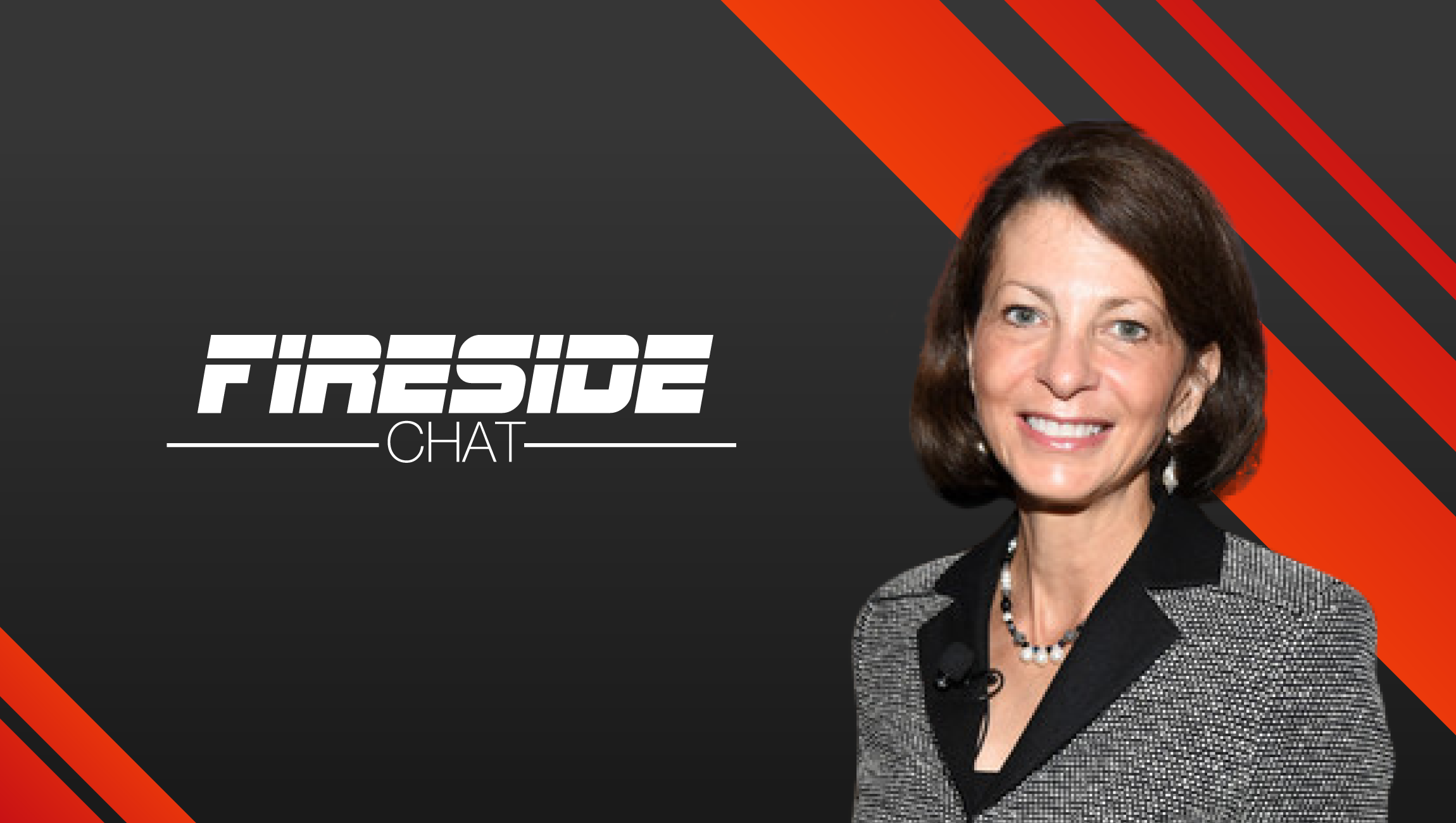Lynda Clarizio talks about her journey in Martech.
Tell us about your role at IRIS.TV as an advisory member and how you first learned about the company?
I first learned about IRIS.TV from a former colleague of mine at Nielsen who, like me, shares a passion for companies in the space that are doing interesting work with unique data sets. As I learned more about IRIS.TV, I was particularly intrigued by how the company was collecting data about consumer video consumption — an area that’s growing and in need of understanding.
As the former president of Nielsen, what draws you to explore more about video programming?
I’m really interested in watching the trends in consumer media consumption. Digital video consumption continues to grow dramatically and yet it’s an underserved area in terms of having independent third parties that are able to measure that consumption and understand how to improve future programming. While Nielsen is well known as the industry leader in measuring consumer consumption of television, digital video measurement was always an area that we wanted to expand further into. It was this interest that led me to IRIS.TV.
Learning about IRIS.TV, I was intrigued by the company’s approach to using augmented intelligence to help deliver contextually relevant content based on consumer interests.
Read More: Fireside Chat with Randy Apuzzo
As an advisor for a company that is breaking new ground with a new approach to video personalization, AI and programming, what do you think is most important to bring to the table and what is the proper mix for an emerging company in a transformational industry?
Let’s first approach this from a general perspective. With a lot of emerging companies in the media and marketing space, I look for a combination of three things.
One, is a very strong leadership team that is balanced not only in terms of skillset, but also in terms of diversity.
Second, I look for a very clear strategic vision to solve a big problem. I need to understand the problem they are trying to solve and the market potential, and make sure the right team is aligned to support that vision.
Third, is execution — what area is the team really focused on and do they have a disciplined strategy. Too many startups try to do too many things at once and although that’s admirable at one level, you have to start somewhere, and you have to show where you can win.
Looking at IRIS.TV, they had all three, a strong leadership team, a clear vision and a strong strategy to execute their vision. The team is passionate about what they do and has created a business and an offering that works with the existing video players, some of which have been available to digital publishers for more than a decade. These existing players have not done a very good job of collecting, evaluating and analyzing data on what consumers are doing and what they care about and delivering that information back to digital publishers. Those same insights can be translated into measurement and analytics for advertisers. IRIS.TV saw this opportunity and they worked on building a solution to a problem that dates back to not only my time at Nielsen but my early days at AOL, where we invested early on in video players.
How do you collaborate with the executive team at IRIS.TV?
As an advisor for IRIS.TV, I serve as a sounding board for strategy and provide assistance in making valuable introductions to leaders in the industry. One of the things that’s really important when you’re starting up in the media space is to connect with those who’ve been there and done a lot of similar things in the past.
Read More: Fireside Chat with Bill Swanson
How do you describe IRIS.TV to others in the industry and who is in most need of what IRIS.TV delivers?
IRIS.TV enables digital video publishers to optimize programming and provide more targeted video recommendations to their audiences. The company has also built an impressive branded content marketplace, which helps advertisers target contextually relevant videos.
IRIS.TV helps digital video publishers to deeply understand the types of videos that their consumers are viewing. This is the area where the company has the biggest market share in terms of video personalization. The company is also growing their relationships with agencies and brand marketers, who want to deeply understand the data that the digital video publishers are collecting so they can advertise against a more targeted audience.
What are some of the important trends that you are seeing that drive change with marketers and publishers?
We continue to see tremendous growth in videos on the big social video platforms such as YouTube, Facebook, and even newer platforms such as Twitch aiming to deliver enormous scale to advertisers and marketers. But what does this growth mean for digital video publishers? It means that to own and stream videos, these publishers need to focus more on delivering content to targeted audiences versus turning to social platforms to drive scale. Publishers also need to focus on creating experiences that bring those targeted audiences back for more. This is why data is so important, to gain a deeper understanding of what types of videos people are watching and then make recommendations based on those behaviors. With personalized video experiences, publishers can also provide advertisers with opportunities to deliver branded content that is contextually relevant.
What are the technologies that are driving brand engagement and improving customer experience?
Data and AI technologies. Being armed with data that helps to better understand the consumer changes how you deliver experiences. Publishers can offer advertisers better audience data and guarantees content that has actually been viewed. That is new in the industry, not new in TV, but new in the digital video industry, where the focus has more been on viewability. So, this is going beyond viewability and into better programming because of AI-powered platforms such as IRIS.TV.
Read More: Fireside Chat with Lindsay O’Neill
When evaluating what companies you advise, what do you look for?
I started my career in the early days of the internet working for AOL. I worked closely with leaders such as Steve Case and Ted Leonsis. They always said, “Follow the consumer, follow the consumer, follow the consumer.” This has been a guiding principle for me throughout my entire career in terms of how I look at businesses and evaluate them and whether they’re going to be successful. You need to ask, “Are you involved in a business where underlying it, consumer interest is growing?” For example, traditional TV viewership is not growing but digital video is growing.
Second, I look at companies that are trying to solve a problem that needs to be solved. I want to know if the company is willing to do it in a disruptive way and willing to put together a strong multidisciplinary team, that can solve a specific problem in a focused way.
Any advice that you have received that you would pass on to other entrepreneurs in the marketing and publishing industry?
First, follow the consumer. Second, define the problem that you’re trying to solve, make sure it’s a big enough problem. Third, make sure you have the right team. If it’s a problem that needs to be solved with a technology solution, make sure you have a strong co-founder that can serve as a CTO and vice versa, if you want a business person to build a business around the solution. It sounds very basic, but it is a common challenge when starting a business.
Most important, don’t be afraid to think big and don’t be afraid to fail. Failure is not necessarily a bad thing. You can learn a lot from failing.
Is there anything that you are seeing from a macro level with traditional publishers? Any advice or observations that you have? I mean, video seems to be a big piece, and I know that failed.
Viewership for traditional TV is declining. The results is that this mature industry is going through consolidation and the print media is also in decline — so the focus needs to be on digital experiences where viewership continues to grow and media publishers need to evolve quickly to keep pace with players such as Google/YouTube and Facebook. I think a big question that’s out there is, how can smaller video publishers survive in today’s climate? Publishers understand that they need to leverage data better, because that’s what YouTube does, that’s what Facebook does and that’s what Netflix does. This is why IRIS.TV is so interesting to me, they can provide publishers with similar technology and insights that the larger platforms are using without starting from scratch.
It’s a very different industry than it was 20 years ago when we as an industry were starting to look at the impact the internet could have on consumer behavior as well as the types of businesses to support the opportunities driven by the internet.
I think IRIS.TV is a really interesting company. The way they surface data to publishers is truly unique — not to mention driving new opportunities for advertisers to understand the audiences who are seeing an ad and what they are watching at the time branded content is delivered.
Read More: Fireside Chat with John Sampogna
Thank You, Lynda, for answering all our questions. We hope to see you again at MTS, soon.



